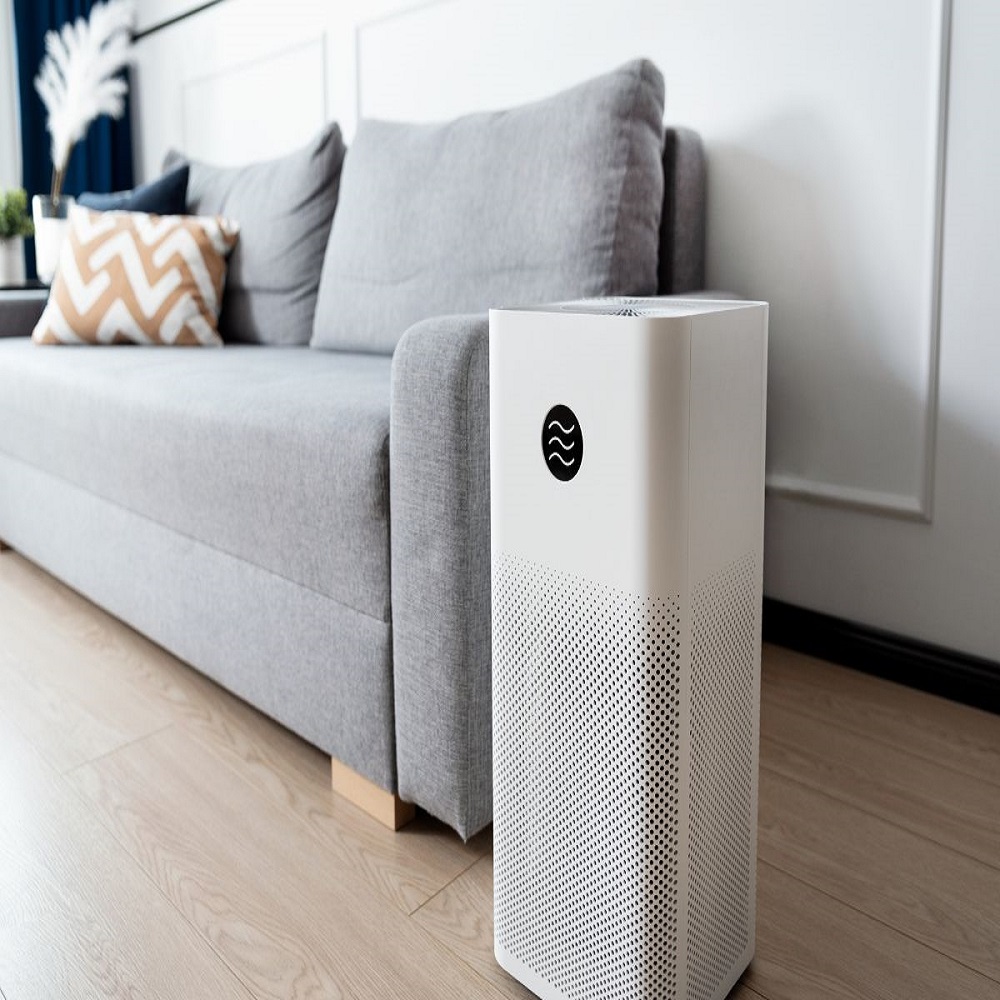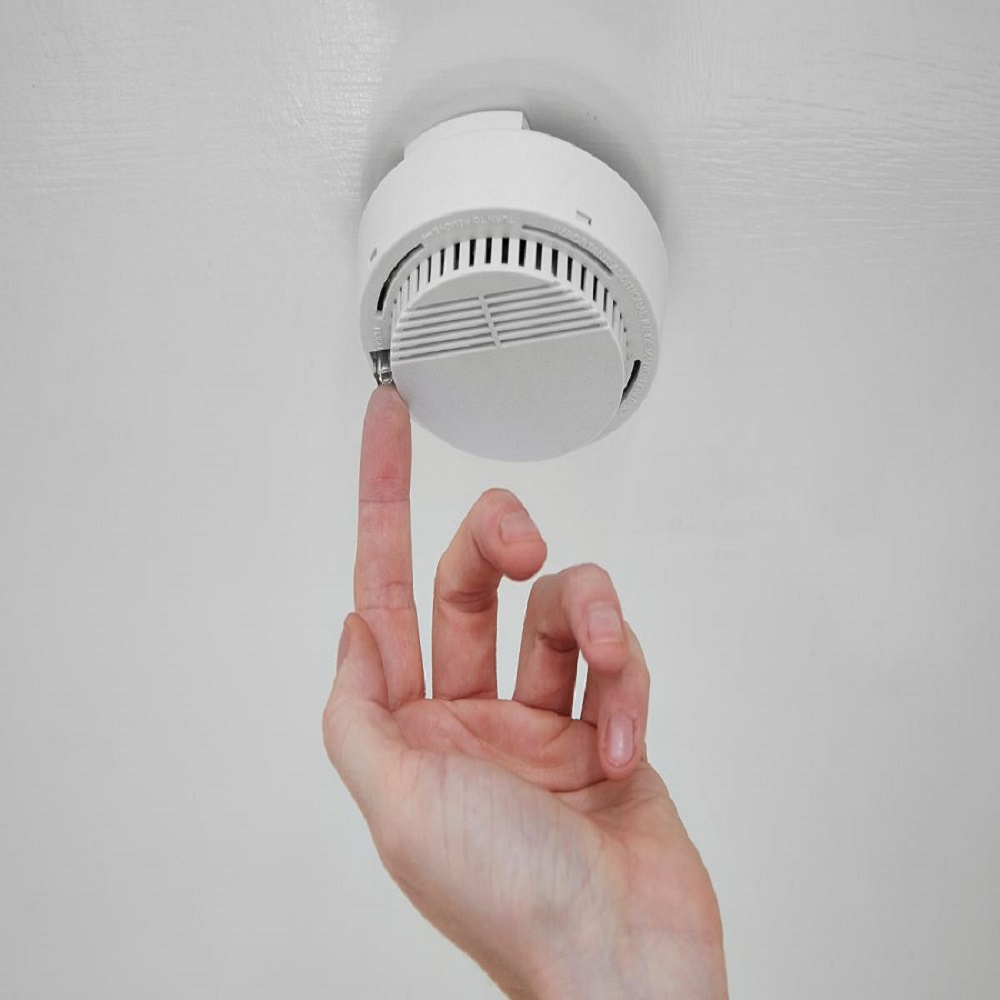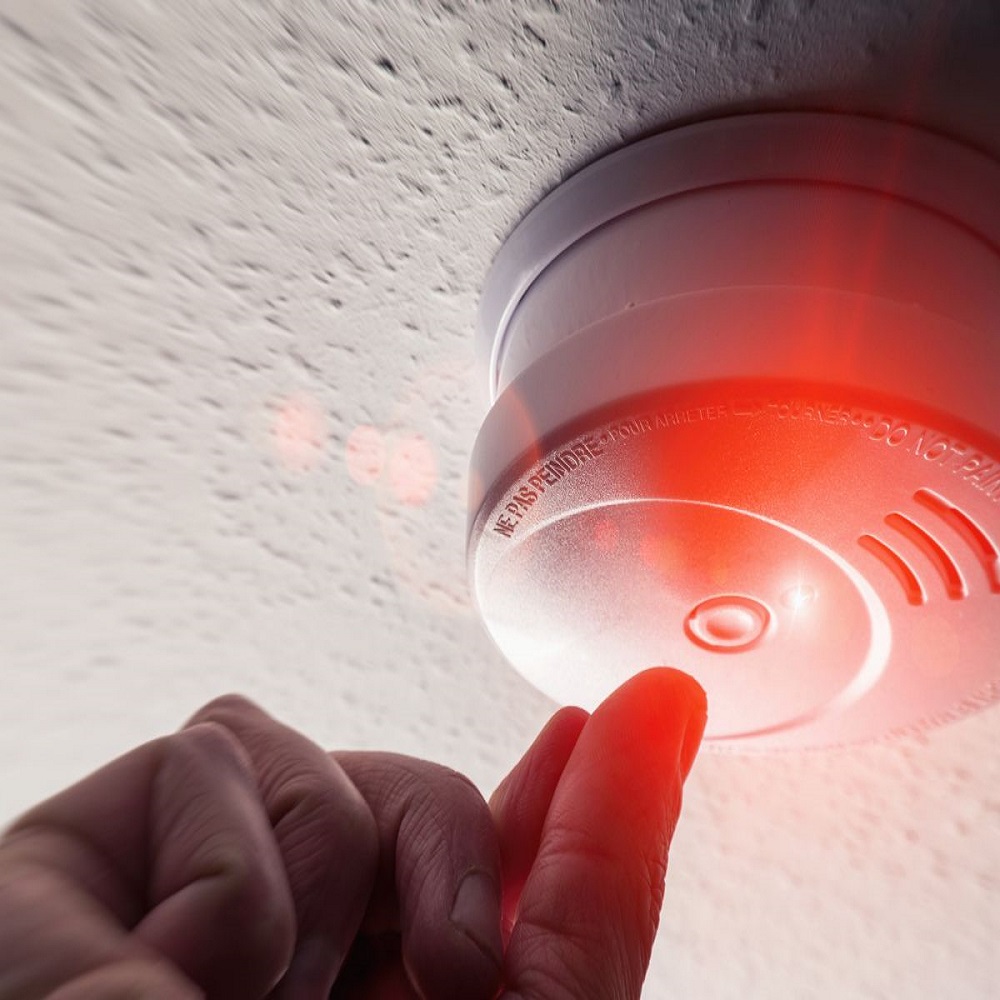Types of Smoke Alarms and Their Sensitivities
Understanding how different smoke alarms react to vaping is crucial for safe indoor vaping. Three main types are common: ionisation, optical, and heat alarms.
Ionisation Alarms and Vaping
Ionisation alarms detect smoke using a small amount of radioactive material. They’re quick to sense small smoke particles. However, dense vapour from e-cigarettes can also trigger these alarms. If you use a powerful vape device, be cautious around ionisation alarms.
Optical Alarms and E-Cigarette Vapour
Optical alarms work with infrared lights to spot smoke. Any disruption, like vapour clouds, can set these off too. These alarms are sensitive to both smoke and vapour, especially from high VG e-liquids.
Heat Alarms: The Unlikely Trigger
Heat alarms detect rapid temperature increases. They are least likely to be set off by vaping, as they respond to heat, not smoke or vapour.
Common Causes of Vape-Related Smoke Alarm Triggers
Understanding what causes a smoke alarm to trigger is important. This knowledge can help avoid vape-related disruptions.
Proximity to Smoke Alarms
Being too close to smoke alarms increases the chance of setting them off with vape clouds. For safety, stay away from alarms when vaping.
Density of the E-Cigarette Vapour
Denser vape clouds are more likely to activate smoke alarms. Lighter vapor is less of a risk near sensitive detectors.
Ventilation Impact on Vapour Detectors
Rooms with poor airflow can lead to vapor buildup. This buildup increases the likelihood of triggering alarms. Ensure good ventilation when vaping indoors.

Tips to Vape Indoors Without Setting Off Smoke Alarms
Vaping indoors requires mindfulness to avoid setting off smoke alarms. Here are some tips to help you vape without causing disruptions.
Vaping in Well-Ventilated Areas
Ventilation is key when vaping indoors. Open windows or use fans to disperse vapour quickly. This minimizes the risk of setting off alarms.
Keeping Distance from Smoke Detectors
Stay away from smoke detectors when vaping. The further the vapour is from the detector, the lower the risk of triggering it.
Selecting the Right E-Liquid
Choose e-liquids with higher propylene glycol (PG). These produce thinner vapour that is less likely to trigger alarms compared to high vegetable glycerine (VG) ones.
Adjusting Your Vape Device Settings
Use vape devices with adjustable settings. Lower the power to reduce vapour production. This helps avoid tripping sensitive alarms.
Technological Solutions for Vapers
Advances in vaping technology offer clever ways to indulge without the alarm hassle.
Understanding Smokeless and Stealth Vaping Devices
Certain devices are designed to reduce vapour production. These ‘stealth vapes’ use a high PG e-liquid ratio to make less visible vapour. They’re ideal for indoor use where smoke alarms are a concern.
The Role of Air Filters and Ventilation Systems
Modern air filtration and ventilation help to avoid setting off alarms when vaping indoors. Filters can trap vapour particles while ventilation systems disperse them quickly. Use these systems to keep the air clear and alarms silent.
The Importance of Fire Safety with Indoor Vaping
When vaping indoors, maintaining fire safety is key. This means being careful around smoke alarms and fire alarms.
Regular Testing and Maintenance of Smoke Alarms
Ensure smoke alarms function well by testing them often. Replacing batteries and checking for dust helps them work right.
It’s vital to test smoke alarms each month. Press the test button to make sure they beep. If not, replace batteries or get a new alarm.
Legal and Ethical Considerations of Vaping Indoors
Vaping indoors, near alarms, can cause legal issues. It may trigger false alarms, wasting emergency services’ time and resources.
Consider others when vaping indoors. Respect laws and company rules. Don’t vape where it’s banned, to avoid fines or other problems.
Also, think about ethics. Don’t vape near smoke alarms in shared spaces. It’s not just about law, but also respecting others’ comfort and health.

Vaping and Fire Alarm Systems: A Comprehensive Overview
Differences Between Single Smoke Alarms and Fire Alarms
Fire alarms and smoke alarms differ in complexity and function. Single smoke alarms detect smoke using specific sensors, including ionisation or optical types. Fire alarm systems, however, are more intricate. They incorporate multiple detection devices scattered throughout a building. These systems are wired into a main control panel that manages alarms across a variety of zones, enhancing safety and response times.
Fire alarms typically connect to other building systems. This integration ensures a broader and more effective response during fire incidents. Unlike standalone smoke alarms that operate independently, fire alarms are designed to initiate a comprehensive evacuation protocol. This makes smoke alarms suitable for smaller spaces, whereas fire alarm systems are essential in larger, complex environments.
Potential Fines and Liabilities Associated with Vaping Indoors
Indoor vaping can trigger smoke and fire alarms, leading to significant consequences. Vaping near these sensitive devices risks setting them off, which could result in building evacuations. Evacuations disrupt activities and can even lead to hefty fines, especially in places like hotels or workplaces.
Business owners might face legal liabilities if vaping is permitted without proper precautions in their establishments. This can include violating local regulations that protect occupants from potential fire hazards. Ensuring that vaping areas are well-ventilated and away from alarm sensors is crucial to prevent these legal and financial pitfalls. Always check local laws to avoid penalties and enhance safety for everyone.
The Impact of Vaping on Fire Alarm Sensitivity
Vaping can cause false alarms in smoke detection systems, particularly in areas where there is a high concentration of vapor. Most fire alarms, especially optical smoke detectors, are designed to detect particulate matter in the air. The vapor released during vaping often contains tiny particles and moisture that can trigger the sensor, mimicking the behavior of smoke. This results in unnecessary alarms and can disrupt both daily activities and the building’s safety protocol.
Ionization smoke detectors, which are more commonly found in residential settings, work by measuring the disruption of electrical currents caused by smoke particles. Although less sensitive to vapor, they can still occasionally react to dense clouds of vapor, leading to false positives. In either case, whether it’s optical or ionization detection, vaping indoors can significantly increase the likelihood of triggering alarms, which can result in unnecessary evacuations and response actions from fire safety personnel.

FAQs on Vaping and Smoke Alarms
Vapers often have questions about how e-cigarettes affect smoke alarms. This section aims to clear up any confusion.
Addressing Common Misconceptions and Concerns
Many think vaping can’t set off smoke alarm. This is a myth. As we’ve seen, vape clouds can indeed trigger certain types of alarms. It’s also wrong to think all vape devices are the same. Different devices produce varying vapour densities that can affect alarms differently.
Some believe smoke alarms are too sensitive and mistake them as faulty. Alarms are designed to detect particles, whether from smoke or vapour. Vaping too close or producing dense clouds can set them off. Another misconception is that heat alarms can be set off by vaping. However, this is unlikely as they’re activated by temperature, not particles.
Tips for Responsible Vaping When Indoors
To vape indoors without setting off alarms, follow these guidelines:
- Vape in ventilated spaces. This helps disperse vapour, reducing alarm triggers.
- Stay clear of alarms. Keep your vaping away to prevent setting them off.
- Use higher PG e-liquids. They make less vapour and are less likely to cause alarms.
- Lower your device’s power. This reduces vapour production and risk to alarms.
- Install air filters if possible. They can catch vapour particles from the air.
Remember, safety comes first. Never cover or tamper with smoke alarm to vape indoors. Always make sure to check the local vaping rules and respect others around you.


